
Stutthof was a Nazi concentration camp established by Nazi Germany in a secluded, marshy, and wooded area near the village of Stutthof 34 km (21 mi) east of the city of Danzig (Gdańsk) in the territory of the German-annexed Free City of Danzig. The camp was set up around existing structures after the invasion of Poland in World War II and initially used for the imprisonment of Polish leaders and intelligentsia. The actual barracks were built the following year by prisoners. Most of the infrastructure of the concentration camp was either destroyed or dismantled shortly after the war. In 1962, the former concentration camp with its remaining structures, was turned into a memorial museum.

Aufseherin was the position title for a female guard in Nazi concentration camps. Of the 50,000 guards who served in the concentration camps, training records indicate that approximately 3,500 were women. In 1942, the first female guards arrived at Auschwitz and Majdanek from Ravensbrück. The year after, the Nazis began conscripting women because of a shortage of male guards. In the context of these camps, the German position title of Aufseherin translates to (female) "overseer" or "attendant". Later female guards were dispersed to Bolzano (1944–1945), Kaiserwald-Riga (1943–44), Mauthausen, Stutthof (1942–1945), Vaivara (1943–1944), Vught (1943–1944), and at Nazi concentration camps, subcamps, work camps, detention camps and other posts.

Elisabeth Becker was a Nazi concentration camp overseer in World War II. She was convicted at the Stutthof trials of crimes against humanity and executed.

Gerda Steinhoff was a Schutzstaffel (SS) Nazi concentration camp overseer following the 1939 German invasion of Poland.
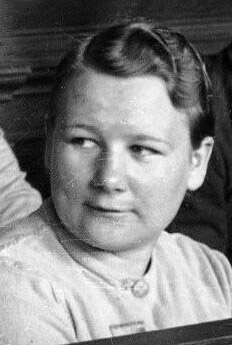
Wanda Klaff was a Nazi concentration camp overseer. Klaff was born in Danzig to German parents as Wanda Kalacinski. After the war, she was executed for crimes against humanity.
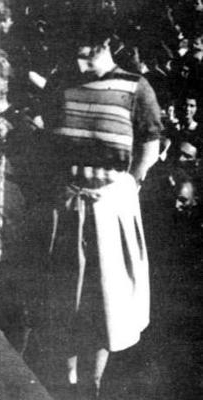
Ewa Paradies was a Nazi concentration camp overseer.
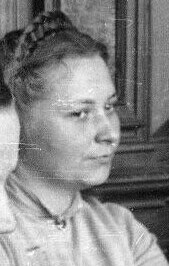
Jenny-Wanda Barkmann (30 May 1922 – 4 July 1946) was a German overseer in Nazi concentration camps during World War II. She was tried and executed for crimes against humanity after the war.
Margot Elisabeth Dreschel, also spelled Drechsler, or Drexler, was a prison guard at Nazi concentration camps during World War II. For her role in the Holocaust, she was sentenced to death and hanged.

Biskupia Górka is a neighbourhood and hill in Gdańsk, Poland, located in the Śródmieście district. Historically, Biskupia Górka had important strategic meaning, since it is a hill close to the main city.
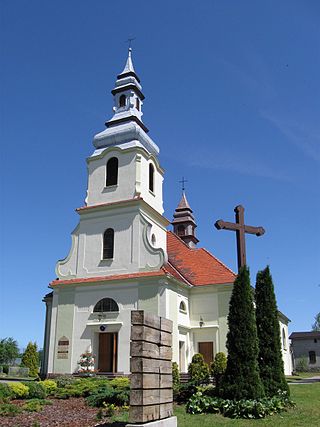
Dziemianypronounced[d͡ʑɛˈmʲanɨ] is a village in Kościerzyna County, Pomeranian Voivodeship, in northern Poland. It is the seat of the gmina called Gmina Dziemiany. It lies approximately 19 kilometres (12 mi) south-west of Kościerzyna and 70 km (43 mi) south-west of the regional capital Gdańsk. It was the location of the Nazi concentration camp Dzimianen - Sophienwalde, a subcamp of the concentration camp Stutthof. Here the SS-Truppenübungsplatz Westpreußen was located during the occupation of Poland in World War II.

Gross-Rosen was a network of Nazi concentration camps built and operated by Nazi Germany during World War II. The main camp was located in the German village of Gross-Rosen, now the modern-day Rogoźnica in Lower Silesian Voivodeship, Poland, directly on the rail-line between the towns of Jawor (Jauer) and Strzegom (Striegau). Its prisoners were mostly Jews, Poles and Soviet citizens.
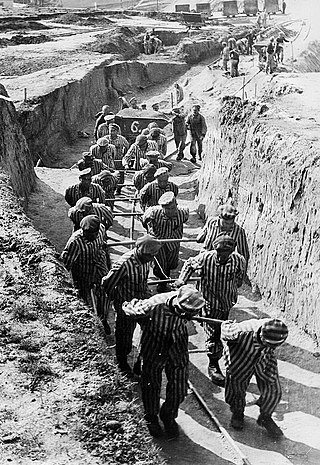
From 1933 to 1945, Nazi Germany operated more than a thousand concentration camps, including subcamps on its own territory and in parts of German-occupied Europe.

Herta Bothe was a German concentration camp guard during World War II. She was imprisoned for war crimes after the defeat of Nazi Germany, and was subsequently released early from prison on 22 December 1951.

Ruth Closius-Neudeck was a Nazi Schutzstaffel (SS) supervisor at a Nazi concentration camp complex from December 1944 until March 1945. She was executed for war crimes for her role in the Holocaust.
As a Nazi concentration camp for forced labor, Helmbrechts concentration camp was a women's subcamp of the Flossenbürg concentration camp founded near Helmbrechts near Hof, Germany in the summer of 1944. The first prisoners who came to the camp were political prisoners from the Ravensbrück camp in northern Germany. Later Jewish prisoners were brought.

The Stutthof trials were a series of war crime tribunals held in postwar Poland for the prosecution of Stutthof concentration camp staff and officials, responsible for the murder of up to 85,000 prisoners during the occupation of Poland by Nazi Germany in World War II. None of the Stutthof commandants were ever tried in Poland. SS-Sturmbannführer Max Pauly was put on trial by a British military court in Germany but not for the crimes committed at Stutthof; only as the commandant of the Neuengamme concentration camp in Hamburg. Nevertheless, Pauly was executed in 1946.
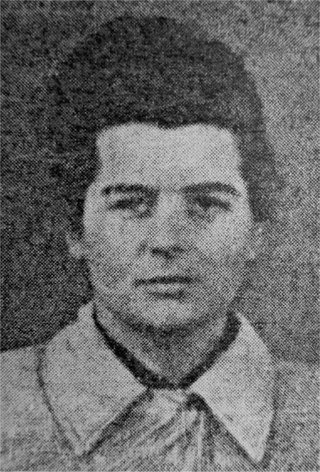
Else Lieschen Frida "Elsa" Ehrich was a convicted war criminal who served as a Schutzstaffel (SS) guard in Nazi concentration camps, including at Kraków-Płaszów and the Majdanek concentration camp during World War II. She was tried in Lublin, Poland at the Majdanek Trials and sentenced to death for war crimes. Ehrich was hanged on 26 October 1948.

Johann Pauls was a German SS-Oberscharführer in Stutthof concentration camp. He was executed for war crimes.

Erna Beilhardt was a German female guard at Stutthof concentration camp during the Holocaust. A member of the SS-Aufseherin, or overseer, Beilhardt was also a nurse affiliated with the German Red Cross during the last year of World War II. According to a Polish historian, the case of Beilhardt is the only known instance of an SS guard outright refusing to serve in Stutthof after receiving training.

















